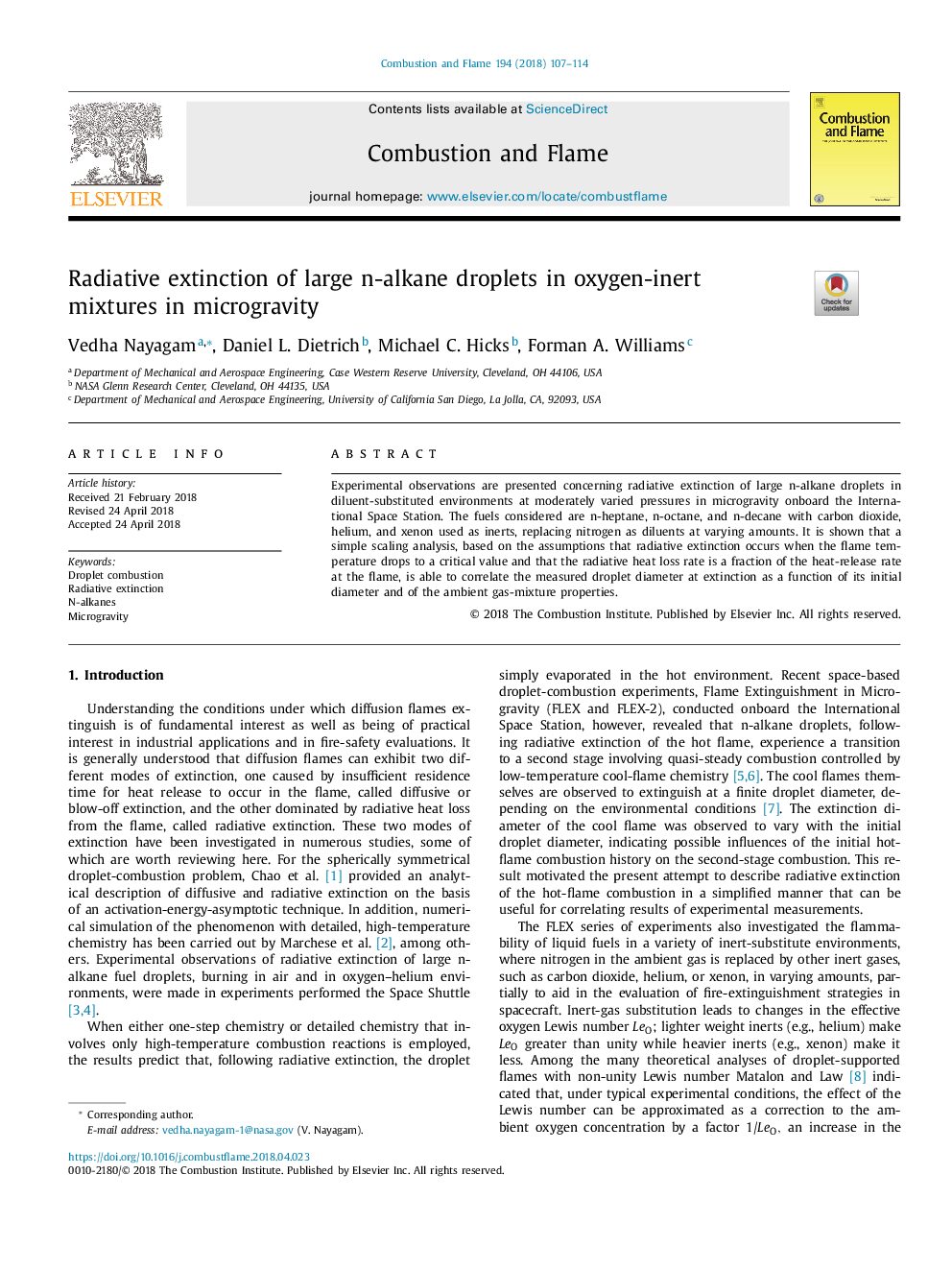| Article ID | Journal | Published Year | Pages | File Type |
|---|---|---|---|---|
| 6593459 | Combustion and Flame | 2018 | 8 Pages |
Abstract
Experimental observations are presented concerning radiative extinction of large n-alkane droplets in diluent-substituted environments at moderately varied pressures in microgravity onboard the International Space Station. The fuels considered are n-heptane, n-octane, and n-decane with carbon dioxide, helium, and xenon used as inerts, replacing nitrogen as diluents at varying amounts. It is shown that a simple scaling analysis, based on the assumptions that radiative extinction occurs when the flame temperature drops to a critical value and that the radiative heat loss rate is a fraction of the heat-release rate at the flame, is able to correlate the measured droplet diameter at extinction as a function of its initial diameter and of the ambient gas-mixture properties.
Related Topics
Physical Sciences and Engineering
Chemical Engineering
Chemical Engineering (General)
Authors
Vedha Nayagam, Daniel L. Dietrich, Michael C. Hicks, Forman A. Williams,
